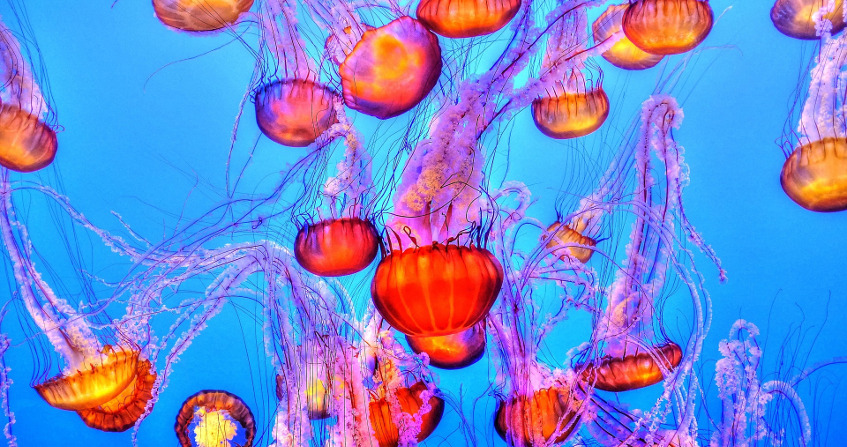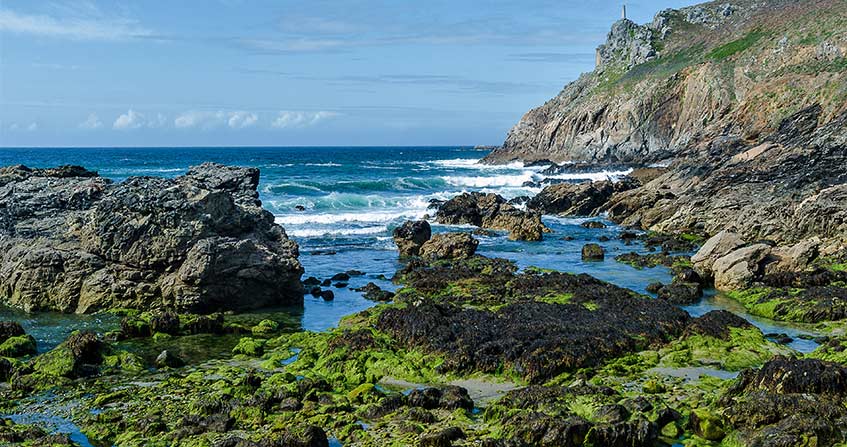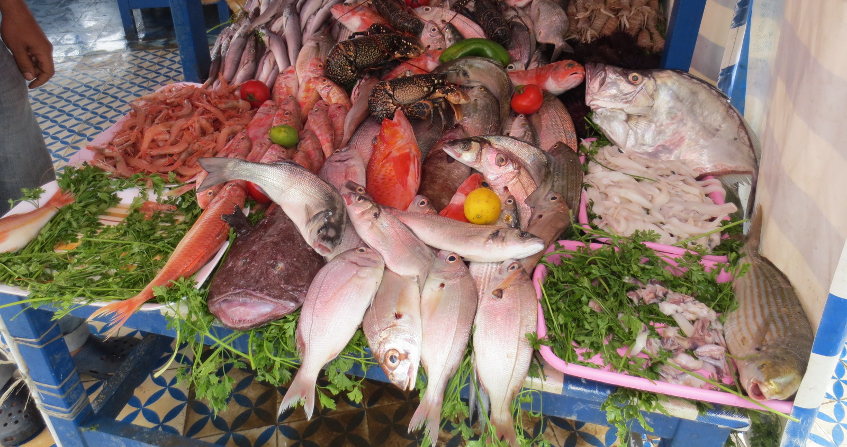The promises of ecological rehabilitation in port areas
PDF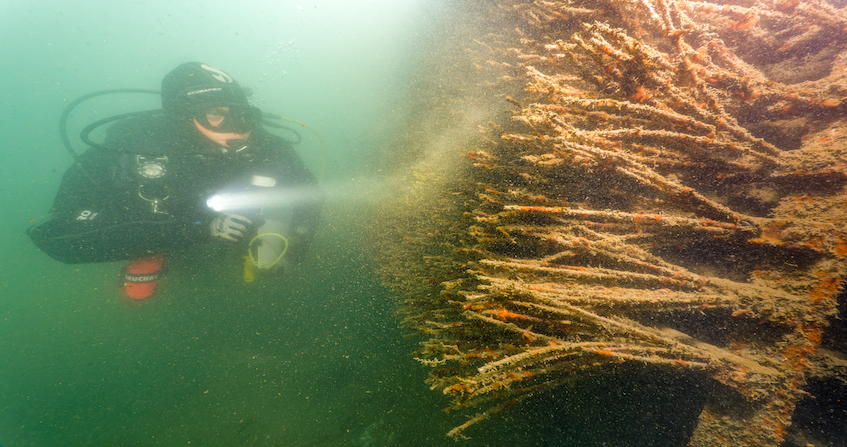
Can we remake what we have undone? The construction of ports in coastal areas leads on the one hand to a total and irreversible destruction of marine habitats and on the other hand to significant chemical contamination. These pressures are some of the greatest threats to coastal marine biodiversity. Faced with increasingly important economic stakes, humanity finds itself torn between the need to develop port areas on the one hand, and the absolute necessity to maintain coastal ecosystems and the services associated with them on the other. In an attempt to reconcile the two, more and more countries are engaging in ecological rehabilitation approaches aimed in particular at limiting the impact of “grey” infrastructures, i.e. those built by man without ecological consideration, on marine coastal ecosystems. But do these projects represent a real hope for the conservation of marine biodiversity or should we see them as a simple blue mirage?
- 1. The paradox of coastal areas: essential habitats among the most threatened on the planet
- 2. Harbors, a major pressure on the coastline
- 3. Ecological restoration in ports, an emerging theme
- 4. Rehabilitation of ecological functions in port areas, a promising start?
- 5. Paradoxes and ambiguities of rehabilitation in port areas
- 6. Messages to remember
1. The paradox of coastal areas: essential habitats among the most threatened on the planet
The oceans represent 70.8% of the world’s surface. There are about 240,000 marine species, or about 13% of the total biodiversity identified. But this figure is largely underestimated: every year, new species are discovered. Researchers believe that there are between 0.7 and 1.6 million species living in the sea (See When the Tara Oceans expedition explores the diversity of plankton).
Among the vast expanses of marine waters, coastal areas are the richest and most productive. At the interface between marine and terrestrial environments, they play an essential role in maintaining global ecological and hydrological balances, as well as in the life cycle of many animal and plant species.
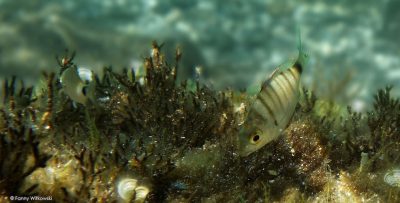
Human societies have long been attracted to coastal areas where they have found a variety of resources, including food, refuge areas, agricultural land and communication routes. Today, 44% of the world’s population lives within 150 km of the coast [3] and this figure is growing. Faced with this densification, the development of seaside tourism and the need to reinforce the protection of its coastal cities from the danger of erosion and flooding, Man has sought to gain territory on the sea and has built artificial structures: dikes, ports, quays, polders, artificial beaches, etc. The result is an increasing artificialization of the coastline. As an example, the rate of coastline artificialization in the French Mediterranean has increased more than threefold between 1950 and today [4] (Figure 2).
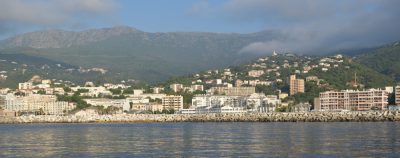
2. Harbors, a major pressure on the coastline
Harbors are a major pressure on coastal ecosystems. In France, there are more than 500 harbors, the majority of which are marinas, but there are also large fishing harbors and 66 commercial ports [5]. During their construction, natural shallow waters are destroyed and replaced by artificial structures such as dykes or quays whose primary objective is to ensure the protection of goods and populations. These port structures are generally less complex and heterogeneous than the natural habitats they replace. Numerous scientific studies have shown that this loss of complexity and heterogeneity is a cause of the decrease in biodiversity on port structures. In addition, the construction of a port creates enclosed areas and profoundly modifies the local bathymetry, two parameters that greatly influence marine biodiversity.
Habitat transformation is not the only pressure on organisms living in or immediately adjacent to ports. These spaces are generally the receptacle of multiple microbiological, organic and chemical contaminations of human origin. These disturbances are well known to negatively affect the physiology, growth, health, behavior and survival of marine species, especially during their earliest life stages. Pollution from port activities therefore has important consequences for the loss of ecological function of nearshore habitats in and around ports.
Finally, ports are international crossroads for maritime traffic. As such, they are privileged entry points for non-native species via ballast water or biofouling on ship hulls. Unlike natural habitats, port structures are often inhospitable to recolonization by native species. Thus, these structures often serve as hot spots for non-native species, further disrupting the ecology of the system.
Ports can therefore be referred to as synthetic or novel ecosystems, i.e., ecosystems that exhibit conditions and combinations of organisms that do not occur naturally, resulting in biological interbreeding. Even if they are not natural, these synthetic ecosystems can still have useful ecological functions. It is still necessary to know what these functions are, whether they are substitutable for the functions of the original habitats and how best to exploit them.
3. Ecological restoration in ports, an emerging theme
“Restoration”, “rehabilitation”, “recovery”, “renaturation”, etc., are all terms, often derived from land-based experience, which are now encompassed under the terminology of “ecological restoration” and are often misused. These terms have been the subject of much debate and their definitions have evolved over time and among authors. They all have in common the prefix “re” which insists on the notion of repairing past mistakes: through actions on the coastline, Man seeks to remake what he has undone.
Strictly speaking, ecological restoration consists in the integral repair of nature, including all its biodiversity, all the interactions between living beings and their habitats, and all its properties. This return to the natural state can be envisaged:
- by intervening directly on the damaged environment, by modifying its physical characteristics, by reintroducing species, etc., (this is active restoration)
- by reducing the pressure of human activities on this environment to let nature take over (this is passive restoration).
Rehabilitation applies when the environments are too degraded to be the subject of a restoration in the strict sense. The objective is then to make the ecosystem recover certain characteristics of the natural environment such as the presence of certain species, functions or services, without necessarily aiming at exhaustiveness. It is therefore a compromise for very degraded environments between doing nothing and trying to return to a natural state. As the destruction linked to the construction of ports is permanent, the strict restoration of port areas is utopian and only rehabilitation can be envisaged.
The development of our societies is accompanied by an increase in commercial exchanges, the development of new activities at sea (marine renewable energies), the development of nautical tourism and leisure activities. More and more ports will therefore be built or extended in the coming decades, with inevitable and irreversible consequences on coastal ecosystems and on all the species that depend on them. Faced with this worrying situation, it now seems essential to ask the right questions: which projects are really necessary for the current or future development of our societies? What are the solutions to mitigate the impacts of these projects? And finally, how can we compensate for the residual impacts that could not be avoided or mitigated? These questions are an integral part of the “avoid-reduce-compensate” sequence, which aims to reconcile economic development and environmental issues.
4. Rehabilitation of ecological functions in port areas, a promising start?
4.1. The principles of ecological rehabilitation in port areas
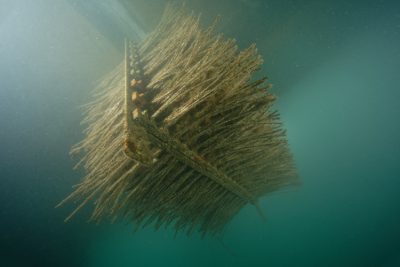
The objective of the structural modification differs according to the projects: in some cases, it will be to create refuges against predators for juvenile fish, in other cases to promote recolonization by local species and structuring species (i.e., those that create a new habitat themselves) or to recreate small puddles sheltering fauna that cannot withstand the exodus at low tide. All of these pilot operations support the idea that port structures can be structurally modified to increase their attractiveness and quality to marine organisms, thus allowing them to contribute to the maintenance of populations while fulfilling their primary functions. Examples are provided in Figures 3, 4 and 5.
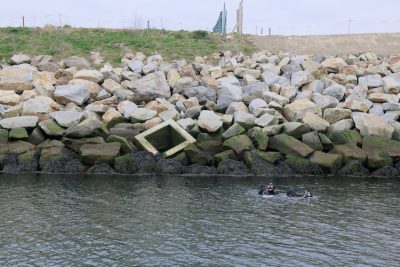
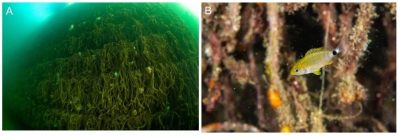
4.2. How successful have ecological rehabilitation operations been in port areas?
Most of the monitoring studies carried out worldwide during these pilot studies have shown very encouraging results. Eco-designed structures generally provide conditions for the development of diverse fixed and sessile communities, with a higher abundance of individuals than on “non eco-engineered” structures. A large-scale study in 14 urban marine areas around the world showed that the total number of species could be up to 2.7 times higher on complex eco-designed structures than on smooth controls [8]. Furthermore, despite the deleterious effect of pollution on organisms, densities of some species on eco-designed structures in ports are sometimes equivalent or even higher than those observed in natural environments.
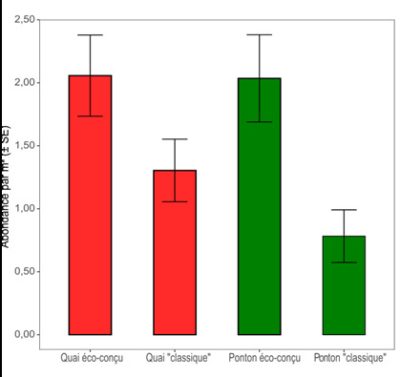
Studies carried out more specifically on juvenile fish colonizing artificial structures in Mediterranean port areas have shown that they are able to settle and maintain themselves in port areas. The installation of complex artificial microstructures in ports allows a doubling of the densities of juvenile fish that colonize these environments (Figures 6 and 7). Unexpectedly, the general health of juvenile fish, estimated from their growth and condition, is equivalent between harbour areas and adjacent natural areas. [10] This is probably due to the effect of higher primary productivity in harbour areas.
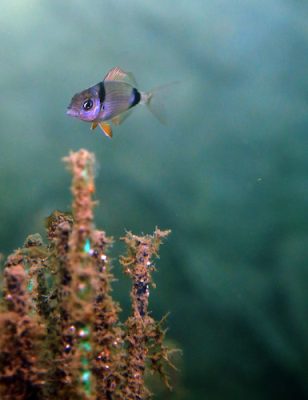
5. Paradoxes and ambiguities of rehabilitation in port areas
The landscape of ecological rehabilitation in port areas has evolved considerably over the last ten years. A global ecological engineering sector has developed, companies have expanded their offers and numerous pilot studies have been conducted in different countries (see for example the World Harbour Project [11]). Operations to increase the complexity of structures and to create micro-habitats to stimulate biodiversity have become common.
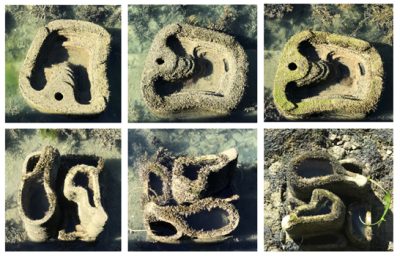
Secondly, the objectives of these operations are very rarely defined upstream in a clear, precise and quantified manner. In the absence of a definition, the notion of success of an operation becomes blurred: what is seen as a success by some may be seen in a more mixed light by others.
Finally, these restoration experiments generally appear opportunistic, on an ad hoc basis, with little or no reflection on the overall scale of the territories. Thus, even if the results of the pilot operations are generally encouraging, their efficiency on a large scale and in the long term still raises questions.
Ecological rehabilitation still poses many scientific challenges, sometimes reaching the limits of ecological knowledge, but also ethical questions that refer each actor to his or her own perception of Nature (see What is Nature?). In the 16th century, François Rabelais wrote “science without conscience is but the ruin of the soul“. Today more than ever, it is necessary to reconcile scientific capacities with their moral acceptability. To rehabilitate a port is to accept that “urban nature” can play a significant ecological role (Figure 9). In other words, it means accepting that the future resilience of the global marine environment may depend significantly on urban marine systems like ports. This paradigm clashes with the “wilderness” image often claimed by environmentalists and still raises many objections that hinder the development of the restoration industry.
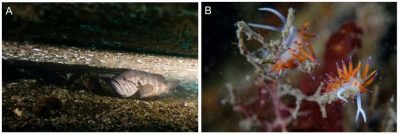
In view of the multitude of positive results of published pilot actions, it would be wrong today to claim that ecological rehabilitation in port areas is a mere blue mirage. However, much work remains to be done to quantify its effectiveness on a large scale. It is therefore objectively premature to present it as a salvation for our marine ecosystems. When properly used, ecological engineering could be beneficial to the conservation of part of the coastal biodiversity. The operations therefore deserve to be encouraged in the same way as protection actions, but also to be accompanied, repeated and extended to be as effective as possible from an ecological and economic point of view.
6. Messages to remember
- The modification and destruction of habitats is one of the main pressures on biodiversity in coastal areas,
- The activity of ports generates various pollutions whose effects add to the destruction of habitats,
- To rehabilitate important ecological functions in ports and thus limit their negative impact on coastal marine ecosystems, one solution is to increase the structural complexity of the structures (dykes, quays, pontoons, etc.),
- Most pilot studies have shown that eco-designed structures accommodate more diversity and abundance than conventional structures. Eco-designed structures would also limit the establishment of non-indigenous species,
- To date, encouraging results have been obtained at the pilot project level worldwide, but the effectiveness on a large spatio-temporal scale remains to be demonstrated,
- In view of the major ecological challenges, the operations must be accompanied with benevolence, without over-evaluation or denigration, by scientists, managers and private operators alike.
Notes and references
Cover image. Diver inspecting a complex artificial micro-structure positioned under a pontoon. [Source: © Ifremer – O. Dugornay]
[1] Area where juveniles of a mobile species, e.g. a fish species, gather to feed and continue their development. A nursery area can be frequented by several species (according to Ifremer / IOWater)
[2] Macreadie, P.I., Nielsen, D.A., Kelleway, J.J., Atwood, T.B., Seymour, J.R., Petrou, K., … & Ralph, P.J. (2017). Can we manage coastal ecosystems to sequester more blue carbon? Frontiers in Ecology and the Environment, 15(4), 206-213.
[3] http://www.oceansatlas.org
[5] https://www.ecologie.gouv.fr/acteurs-reseau-et-activites-portuaires-en-france
[6] Ecological engineering is thus engineering centered on living things, viewed as a means or an end to action (Rey et al. 2014).
[7] Ecodesign is the design of products (goods or services) that are more respectful of the environment (according to ADEME)
[8] Strain, E.M., Steinberg, P.D., Vozzo, M., Johnston, E.L., Abbiati, M., Aguilera, M.A., … & Bishop, M.J. (2021). A global analysis of complexity-biodiversity relationships on marine artificial structures. Global Ecology and Biogeography, 30(1), 140-153.
[9] Perkol-Finkel, S., Hadary, T., Rella, A., Shirazi, R., & Sella, I. (2018). Seascape architecture-incorporating ecological considerations in design of coastal and marine infrastructure. Ecological Engineering, 120, 645-654.
[10] Bouchoucha, M. (2017). Les zones portuaires peuvent-elles servir de nourriceries alternatives pour les poissons marins côtiers ? Cas des sars en Méditerranée Nord-occidentale (Doctoral dissertation, University of Perpignan).
[11] Project http://www.worldharbourproject.org
[12] The practice would consist in giving a misleading ecological image to actions that are globally ineffective with regard to ecological issues, or even worse, to serve as a guarantee for the degradation of marine ecosystems that are already very fragile.
The Encyclopedia of the Environment by the Association des Encyclopédies de l'Environnement et de l'Énergie (www.a3e.fr), contractually linked to the University of Grenoble Alpes and Grenoble INP, and sponsored by the French Academy of Sciences.
To cite this article: BOUCHOUCHA Marc, CARLIER Antoine, CURD Amélia (January 5, 2025), The promises of ecological rehabilitation in port areas, Encyclopedia of the Environment, Accessed December 6, 2025 [online ISSN 2555-0950] url : https://www.encyclopedie-environnement.org/en/life/promises-ecological-rehabilitation-port-areas/.
The articles in the Encyclopedia of the Environment are made available under the terms of the Creative Commons BY-NC-SA license, which authorizes reproduction subject to: citing the source, not making commercial use of them, sharing identical initial conditions, reproducing at each reuse or distribution the mention of this Creative Commons BY-NC-SA license.





